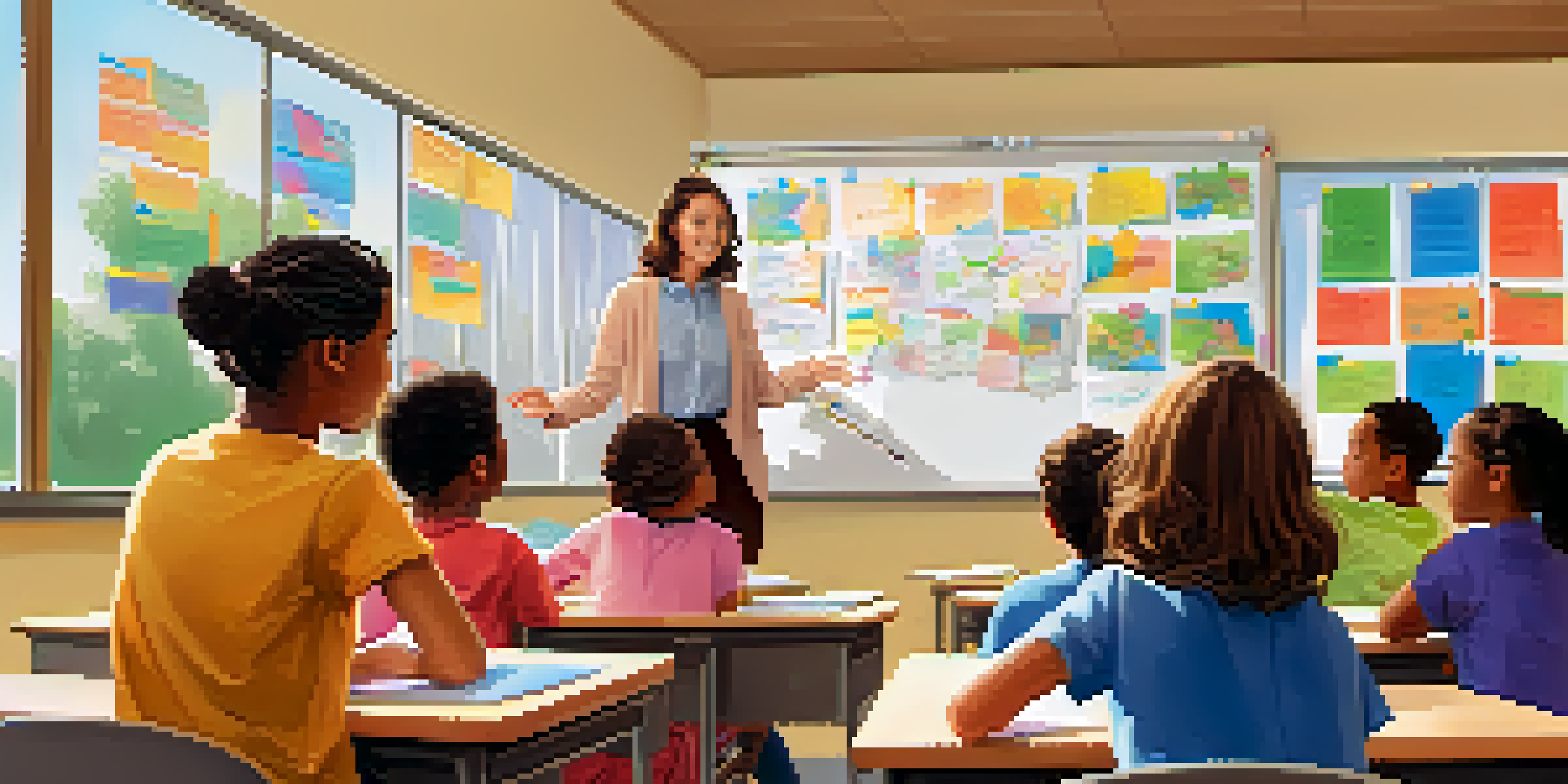The Importance of Goal Setting in Continuous Educator Learning

Understanding the Role of Goal Setting in Education
Goal setting is a fundamental aspect of continuous learning for educators. It provides a clear roadmap, guiding teachers on their professional journey and helping them focus on what truly matters. Just as students benefit from having learning objectives, educators also thrive when they set specific, measurable goals.
Setting goals is the first step in turning the invisible into the visible.
By defining their aspirations, educators can align their efforts with their desired outcomes. This alignment not only enhances their teaching practices but also boosts their confidence as they witness their progress over time. A well-set goal acts like a compass, directing educators through the vast sea of knowledge and skills they need to acquire.
Moreover, goal setting encourages a growth mindset, fostering resilience and adaptability. When faced with challenges, educators can refer back to their goals, reminding themselves of their purpose and motivation. This sense of direction is invaluable in the ever-evolving landscape of education.
Types of Goals for Educators: Short-term vs. Long-term
Educators can benefit from both short-term and long-term goals, each serving a unique purpose. Short-term goals might include improving lesson plans or integrating new technology into the classroom. These goals provide quick wins that can boost motivation and provide immediate feedback on teaching strategies.

On the other hand, long-term goals tend to focus on broader aspirations, such as advancing in one’s career or achieving a particular certification. These goals require sustained effort and commitment, often taking months or even years to accomplish. Balancing both types of goals allows educators to maintain momentum while keeping their eyes on the big picture.
Goal Setting Enhances Educator Growth
Establishing clear goals helps educators align their efforts, boost confidence, and foster a growth mindset.
Setting a mix of short-term and long-term goals creates a dynamic learning environment. Educators can celebrate small successes while still striving toward their larger ambitions, creating a fulfilling professional journey that nurtures both personal and academic growth.
The SMART Criteria: Setting Effective Goals
To maximize the effectiveness of goal setting, educators can use the SMART criteria. SMART stands for Specific, Measurable, Achievable, Relevant, and Time-bound. By ensuring that goals meet these criteria, educators can create objectives that are clear and attainable, enhancing their chances of success.
Goals are dreams with deadlines.
For example, instead of setting a vague goal like 'improve student engagement,' a SMART goal would be 'increase student participation in class discussions by 20% over the next semester.' This specificity not only provides clarity but also offers a clear benchmark for measuring progress.
Utilizing the SMART framework helps educators remain accountable and focused. With well-defined goals, they can take actionable steps toward their aspirations, leading to continuous improvement in their teaching practices and ultimately benefiting their students.
Reflecting on Goals: The Importance of Review
Setting goals is just the first step; regular reflection on those goals is equally important. By periodically reviewing their objectives, educators can assess their progress and make necessary adjustments. This practice fosters a sense of ownership and encourages a proactive approach to professional growth.
Reflection also enables educators to celebrate their achievements, no matter how small. Acknowledging these milestones can boost morale and motivation, creating a positive feedback loop that encourages further goal setting and achievement. It also helps identify areas for improvement, allowing educators to refine their strategies.
SMART Goals Drive Effective Learning
Using the SMART criteria ensures educators set specific, measurable, and achievable goals that enhance teaching effectiveness.
Incorporating reflection into the goal-setting process transforms it into a dynamic cycle of learning. This continuous loop not only enhances personal growth but also enriches the educational experience for students, as teachers evolve alongside their objectives.
Overcoming Challenges in Goal Setting
Goal setting isn’t always a smooth journey; educators often face challenges that can derail their progress. Common obstacles include time constraints, lack of resources, or even self-doubt. Recognizing these challenges is the first step toward finding effective solutions and maintaining motivation.
One way to overcome these hurdles is by breaking goals into smaller, manageable tasks. This approach can alleviate feelings of overwhelm, allowing educators to focus on one step at a time. Additionally, seeking support from colleagues or mentors can provide valuable encouragement and new perspectives.
Ultimately, embracing challenges as part of the goal-setting process can lead to greater resilience. Each obstacle overcome is a learning opportunity, deepening educators’ understanding of their capabilities and reinforcing their commitment to continuous improvement.
The Impact of Goal Setting on Student Outcomes
When educators engage in goal setting, the positive effects extend beyond their own professional development; they significantly impact student learning outcomes as well. Educators who are committed to their goals are often more effective in the classroom, creating a richer learning environment for their students. This commitment can lead to enhanced student engagement and academic performance.
For instance, when teachers set goals to incorporate innovative teaching strategies, students are likely to benefit from more interactive and appealing lessons. This not only aids comprehension but also fosters a love for learning among students, encouraging them to set their own academic goals.
Collaboration Cultivates Goal Culture
Creating a supportive environment for goal setting among educators promotes collective growth and improves student outcomes.
Ultimately, the link between educator goal setting and student success is undeniable. As educators continuously strive for improvement, they cultivate a culture of excellence that inspires students to pursue their own ambitions, creating a win-win scenario for everyone involved.
Creating a Culture of Goal Setting in Schools
To truly harness the power of goal setting, schools should cultivate a culture that encourages it among educators. This can be achieved through professional development programs that emphasize the importance of setting and achieving goals. By providing resources and training, schools can empower educators to take charge of their learning journeys.
Moreover, fostering collaboration among educators can enhance this culture. Creating opportunities for teachers to share their goals and strategies allows for the exchange of ideas and support. This collaborative environment not only strengthens relationships but also inspires innovative approaches to teaching and learning.

In such a culture, goal setting becomes a shared value, leading to collective growth and improvement. When educators feel supported in their pursuits, the entire educational community thrives, ultimately benefiting students and enhancing the overall learning experience.